The Lo Sparviere estate in Lombardy’s Franciacorta, the first estate established by the Gussalli Beretta family in 1974, is housed in an ancient country residence dating back to the 16th century. Over the years, the family has invested steadily in other wine estates across Italy. Wineries in Abruzzo, Tuscany, Piedmont and Trentino Alto Adige now constitute a leading group under the umbrella of Agricole Gussalli Beretta.
Having the opportunity to build a portfolio of wineries focused on premium quality, while allowing both grapes and terroir to have maximum expression is rare. It takes time, technical skill both in the vineyard and cellar, and a deep understanding of each individual wine region.
The wines made by each of the five wineries belonging to the Agricole Gussalli Beretta group have deep links to their respective regions. Lo Sparviere, in Franciacorta, with 30 hectares of vineyards all organically framed since 2013, vinifies each single plot separately to let the particular characteristics of each terroir emerge. The altitude and the cool climate of Radda in Chianti produce extremely elegant Chianti Classico, Riserva and Gran Selezione wines destined for long ageing. Fortemasso’s vineyards in the Langhe are sandy and steep, making for fresh and aromatic Barolos. The wines produced by Steinhaus and Orlandi Contucci Ponno in, respectively, Alto Adige and the Teramo Hills, are the result of extraordinary microclimates influenced by the nature of the territory they come from: mountains and sea.
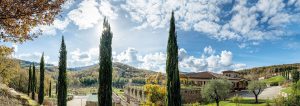
To work as successfully as the owners do, across such compellingly diverse vineyards, as much as 586 km apart, is a huge achievement.
 Lo Sparviere, Franciacorta DOCG Brut Millesimato 2015
Lo Sparviere, Franciacorta DOCG Brut Millesimato 2015
Lo Sparviere is the company’s original country residence and the place where the first wines were made. The bottle-fermented sparkling wines made here today are in the Franciacorta DOCG, Italy’s premier region for the category. In Monticelli Brusati, where Lo Sparviere winery is located, cool soils, warm days and cool nights are vital
for the Chardonnay grapes to deliver the kind of ripe, but still crisp fruit, needed for premium Franciacorta sparkling wine. Its creamy mouthfeel derives from 48 months of in-bottle contact between the wine and its spent fermentation yeasts, before they are removed. The texture this brings, along with obviously reviving fruit notes of yellow pear and white peach, makes for a reliably food-friendly Franciacorta DOCG as well as a smooth aperitif.
Drink now to 2026. Alc 12.5%
 Castello Di Radda, Chianti Classico DOCG 2019
Castello Di Radda, Chianti Classico DOCG 2019
One of the nicest observations you might wish to hear as a wine producer in the Chianti Classico DOCG region of Tuscany is that the contents in the bottle are described as ‛very Radda’. This signifies a Chianti Classico with obvious refinement, which in this case derives in no small part from the high altitude of the prized Radda zone. This area’s cool conditions are easy to sense in this wine’s smooth, palpable crunchiness, a Chianti Classico hallmark. Picking at optimum ripeness is vital for Sangiovese to show its brisk silkiness and finesse. The grapes ferment in a newly constructed, low-energy winery built into the rock. Small amounts of Colorino and Canaiolo grapes add colour and spice to the Sangiovese. The compact clay and limestone (‘alberese’) soils here give mouth-watering wines with vibrant sour cherry fruit, really crisp and with well-shaped tannins. Very Radda.
Drink now to 2030. Alc 14%
 Orlandi Contucci Ponno, Colline Teramane Montepulciano D’Abruzzo DOCG Riserva 2016
Orlandi Contucci Ponno, Colline Teramane Montepulciano D’Abruzzo DOCG Riserva 2016
The Orlandi Contucci Ponno estate is located in Abruzzo’s Teramo Hills. The estate’s Montepulciano vineyards benefit from cool clay soils and cleansing Adriatic sea breezes, Montepulciano being one of the rare grapes that loves sea air. Night cooling comes from the highest peaks in Italy’s mountainous backbone, the Apennine range. This cool airy influx creates the conditions for steady ripening and refreshing, intricate fruit aromas and flavours. This flagship Riserva bottling showcases its generously smooth fruit with only a light oak underlay. This supports the expressive dark red and deeper black fruit notes which shine clear, and are carefully layered, moreish and saline.
Drink now to 2035. Alc 14%
 Fortemasso, Barolo Castelletto DOCG Riserva 2016
Fortemasso, Barolo Castelletto DOCG Riserva 2016
The Gussalli Beretta family’s Piedmontese estate is located in the hamlet of Castelletto, in the eastern part of Barolo’s most prestigious commune, Monforte d’Alba. Barolos from this area are approachable even when fairly young, age beautifully and radiate an innate complexity. The wines from this single-vineyard location have a suave, silky fruit-flowing signature supported by amenably layered tannins. These enviable characteristics are due partly to sandstone soils which stay cool and moist enough to prevent vine stress. Flavour, complexity and aroma intensity develop well because the Nebbiolo vines occupy the top of a vertiginous hill rising to 450 metres, and off which runs notably cold night air. The inner tension this creates adds the right counterpoint to the rich, perfectly ripe fruit.
Drink now to 2030. Alc 13.5%
 Steinhaus, Gewürztraminer Alto Adige DOC 2019
Steinhaus, Gewürztraminer Alto Adige DOC 2019
The cool high vineyards of North East Italy’s Alto Adige region occupy a land of mountainous countryside. The Gewürztraminer grape is said to have originated here, in the village of Tramin, its name translating as ‘the spicey grape from Tramin’. There are two key aspects to a good Gewürztraminer. The first and most obvious is the clarity and freshness of the spicey yellow and white fruit flavours. The second is avoiding overly generous yields that result in flabby wines. These potential pitfalls are dealt with in the bitterly cold winter months at pruning. Limiting bunches makes for an evenly ripe, rich and expressive wine. Such as this Steinhaus 2019, with spicy, crystal clear yellow fruit flavours, soft acidity, plenty of texture, and mouthwatering juiciness. The terroir-driven element leaves a deliciously salty parting tang.
Drink now to 2030. Alc 14%
Discover more about Agricole Gussalli Beretta
Distributed in the UK by Independent Wine
Connect on: Facebook | Instagram
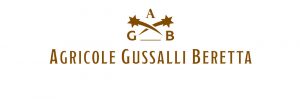



 Lo Sparviere, Franciacorta DOCG Brut Millesimato 2015
Lo Sparviere, Franciacorta DOCG Brut Millesimato 2015 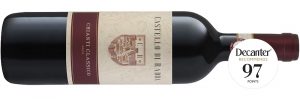 Castello Di Radda, Chianti Classico DOCG 2019
Castello Di Radda, Chianti Classico DOCG 2019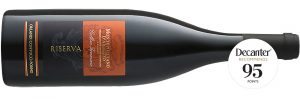 Orlandi Contucci Ponno, Colline Teramane Montepulciano D’Abruzzo DOCG Riserva 2016
Orlandi Contucci Ponno, Colline Teramane Montepulciano D’Abruzzo DOCG Riserva 2016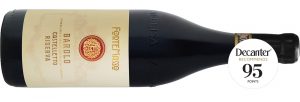 Fortemasso, Barolo Castelletto DOCG Riserva 2016
Fortemasso, Barolo Castelletto DOCG Riserva 2016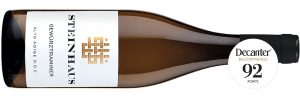 Steinhaus, Gewürztraminer Alto Adige DOC 2019
Steinhaus, Gewürztraminer Alto Adige DOC 2019



